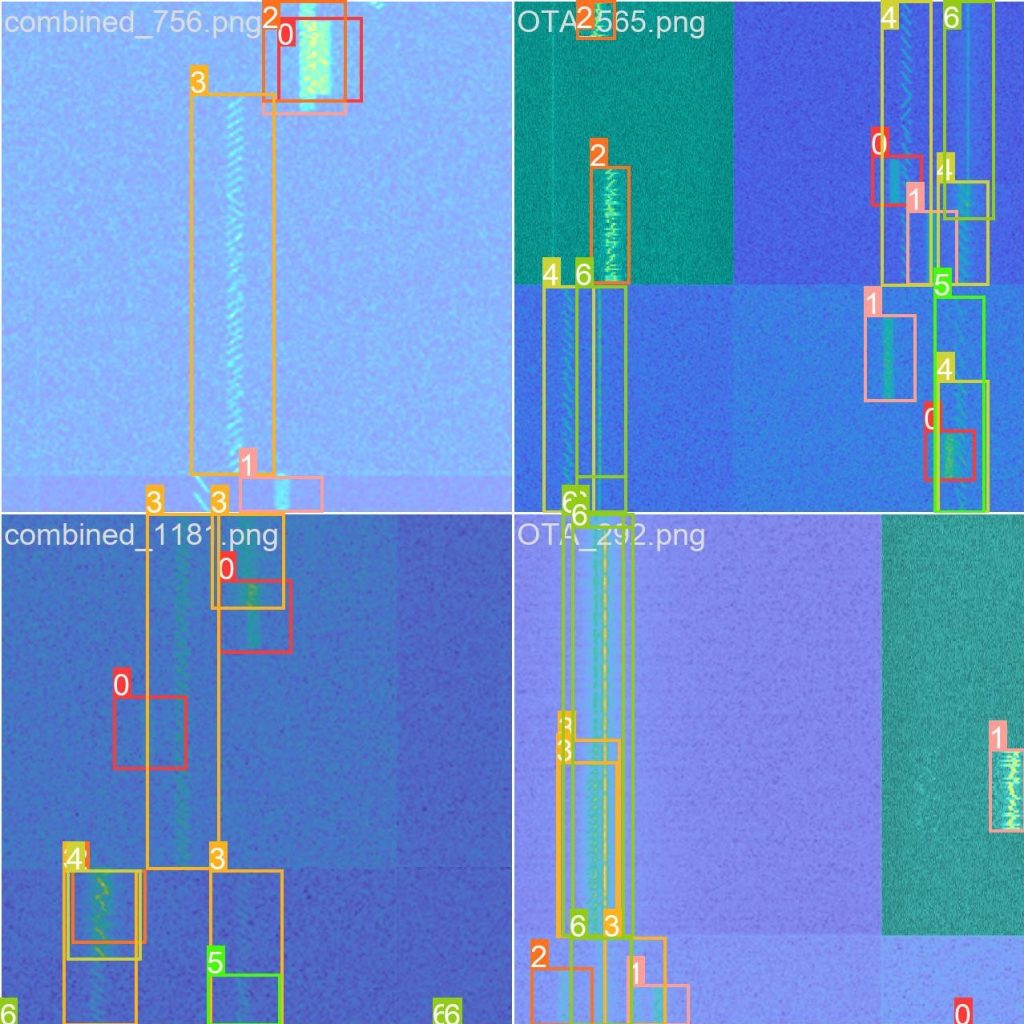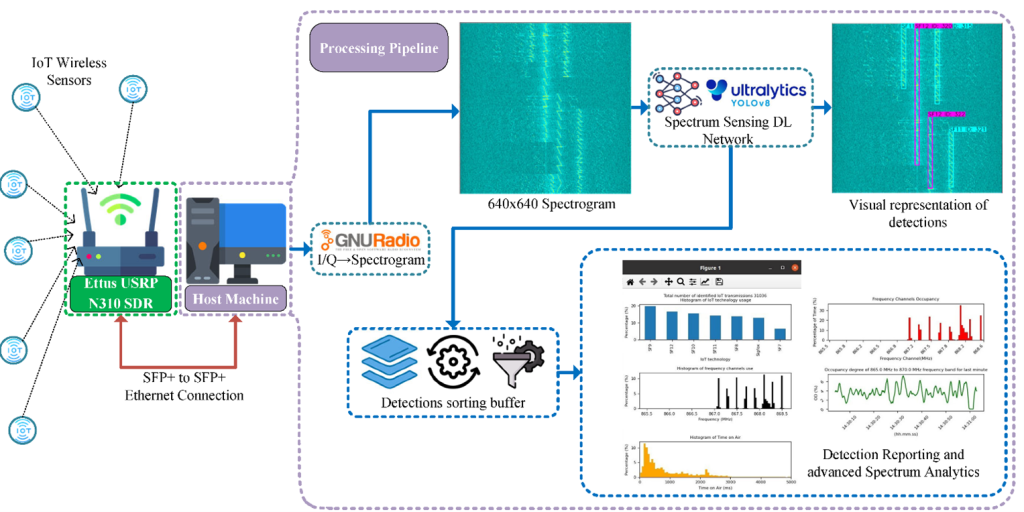This work was supported by a grant of the Ministry of Research, Innovation and Digitization, CNCS – UEFISCDI, project number PN-IV-P2-2.1-TE-2023-1476, within PNCDI IV.
Artificial Intelligence Spectrum Sensing Algorithms


Values
The Spectrum Hive Research Lab is at the forefront of providing advanced spectrum sensing solutions designed to optimize wireless communications and IoT networks. Leveraging cutting-edge AI technology, we enable real-time monitoring and intelligent analysis of radio frequencies, ensuring efficient and reliable connectivity across diverse wireless environments.
Our solutions empower businesses to harness the full potential of the radio spectrum, mitigating interference, enhancing signal quality, and driving seamless performance in wireless communications systems. Whether it’s for smart cities, industrial IoT, or next-generation wireless communications, Our lab delivers the tools and insights needed for smarter, more connected networks.
Our Mission
Our mission is related to finding solutions to improve IoT network’s scalability by using advanced spectrum sensing algorithms that can enable channel allocation techniques and optimized radio channel allocation and utilization in large scale high density IoT architectures. The design of different spectrum sensing algorithms is currently an open issue, and further improvements are needed.
AI Spectrum Sensing
Intelligent radio spectrum sensing using Machine/Deep Learning techniques to detect signal presence, classify emission types, and estimate parameters (center frequency, bandwidth, SNR). Purpose: optimize spectrum usage, avoid interference, and enable 5G/B5G/IoT deployments.
433 / 868 MHz
900 / 1800 MHz
1.8 / 2.1 GHz
2.4 / 5.2 / 5.8 GHz
3.5 GHz / Radar
Summary for Presentation
AI-based Spectrum Sensing automates radio environment observation using ML/DL models (e.g., energy detection, cyclostationary analysis, CNN/RNN/Transformers on spectrograms). The system identifies free channels, classifies modulation types, and detects interference signals, providing near real-time decisions for 5G/B5G, IoT, and mission-critical communications. Frequency examples shown above represent real-world allocations commonly used in sub-6 GHz wireless systems.
Evolution of Spectrum Sensing: A Decade-Long Journey
Our research journey in spectrum sensing began in 2016, evolving from foundational coexistence studies to the development of the AI-based orchestrator. This card previews the key milestones and groundbreaking achievements that define the decade-long progression towards intelligent spectrum management.
Foundational Coexistence Research
Initial studies laid the groundwork for understanding spectrum sharing and mitigating interference challenges.
AI Frameworks Integration
The application of machine learning and deep learning for dynamic spectrum sensing and decision-making.
Adaptive Orchestration
Adaptive AI-based spectrum sensing orchestrator, for next-gen networks.
Spectrum Hive Sensing Outputs

Analytics
Advanced jamming detection with intelligent adaptive fallback strategies and dynamic reconfiguration for mission-critical applications

Resilience
Advanced jamming detection with intelligent adaptive fallback strategies and dynamic reconfiguration for mission-critical applications

Security
Real-time defense mechanisms against interference and jamming.
Spectrum Hive AI-Native Functionalities
Intelligent Protocol Awareness
Multi-protocol recognition across LoRa, Sigfox, LTE, and emerging 5G to 6G standards with high-precision classification algorithms. Advanced deep learning models distinguish between complex signals in dense spectral environments, supporting custom and proprietary protocols via on-demand model training.
Channel Analytics
Multi-protocol recognition across LoRa, Sigfox, LTE, and emerging 5G to 6G standards with high-precision classification algorithms. Advanced deep learning models distinguish between complex signals in dense spectral environments, supporting custom and proprietary protocols via on-demand model training.
Waveform Inference
Advanced machine learning for real-time waveform classification, numerology detection, and modulation scheme identification. Ensures reliable signal detection in highly dynamic and congested radio environments with adaptive processing algorithms.
Adaptive Orchestration
Dynamic resource allocation with predictive modeling for optimal network performance and interference mitigation. AI algorithms continuously learn from spectrum conditions to adjust parameters, ensuring reliable communication across diverse deployment scenarios.
6G Future AI-Native NetworksAI-native orchestration serves as the foundational enabler for 6G networks, delivering superior adaptability and intelligence across all network layers.

Dynamic switching between OFDM and OTFS modulation schemes optimized for mobility scenarios and varying channel conditions with real-time adaptation Numerology Inference
Real-time analysis of IQ samples achieving up to 99.9% accuracy in numerology parameter detection across diverse 6G deployment scenarios Adaptive Handovers
Intelligent multi-numerology coexistence with handover optimization across heterogeneous network segments and diverse service requirements ISAC Integration
Native support for Integrated Sensing and Communication with joint optimization algorithms enabling advanced applications
Meet the Team

By combining expertise in machine learning, signal processing, and communication technologies, we empower industries to maximize spectrum usage, enhance network performance, and meet the growing demands of modern wireless systems. Our solutions cater to
- Telecommunications operators,
- Smart Cities applications,
- IoT network operators,
- Defense and military applications,
and any industry where reliable and efficient wireless communication is essential.